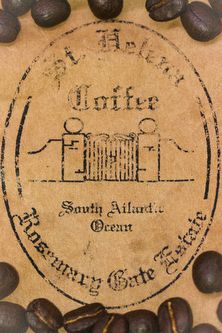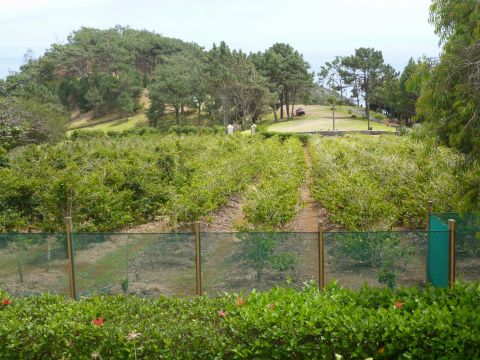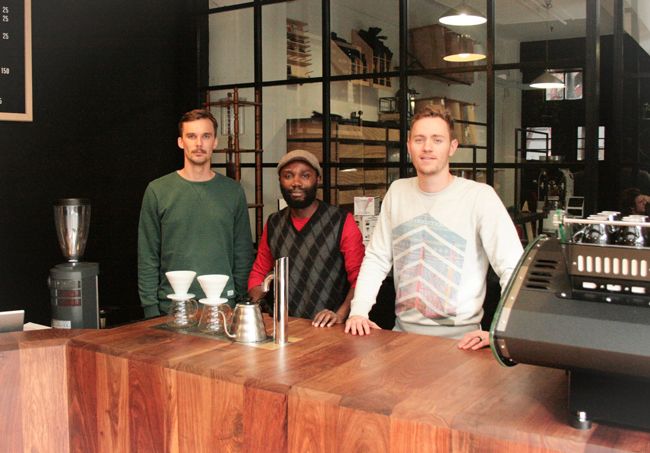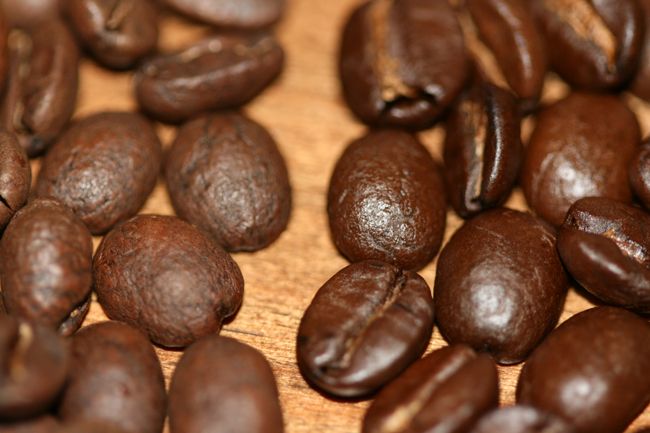
By Anton Louw
 Well travelled packaging
Well travelled packaging
Vin de Constance from Klein Constantia is a great wine with an exceptional heritage. Apart from the literary giants who waxed on about it, it was drank by an exiled Napolean on St. Helena. While this fine sweet wine may have ended his dinners and sent him to bed dreaming of France, he started his days with locally grown coffee that he enthused about with equal vigour. Following this endorsement, St Helena coffee enjoyed brief popularity, before fading from the scene. When a sailor friend let me know he would be calling in at Jamestown while crossing the Atlantic, I leapt at the opportunity to get some prized coffee.
 Rosemary Gate's new plantings. The island is home to ancient wild, or rather feral coffee - some trees are up to 10m tall. Image from: Stitches and Seeds
Rosemary Gate's new plantings. The island is home to ancient wild, or rather feral coffee - some trees are up to 10m tall. Image from: Stitches and Seeds
Much like the timeframes of yore, after a long sea voyage and some improper storage on my part, we finally got round to tasting Rosemary Gate of St Helena. Here follow our observations.
Not being as coffee savvy as many readers, I enlisted the help of Jono, Rob and Ollie from
Rosetta Roastery in Woodstock. These guys specialise in single origin and estate coffees and are more than willing to assist a rookie like me with a cupping.
Rob, Ollie and Jono: These guys know a thing or two
The first point to note was the oily sheen of the beans. I had always assumed this was a good thing, but was soon corrected. When placed next to recently roasted Colombian Narino beans, the difference was apparent. My hosts let me know that the oils tend to rise to surface after a while and so the flavour components tend to evaporate from there. None the less, it's what we had.
Recently roasted Narino on the left, St Helena on the right
When we get round to sniffing and tasting, it proves to still hold some interesting aspects despite being somewhat less than fresh. The original seeds are of the Green-Tipped Bourbon variety and came from Yemen on an East India merchantman in 1732. It's not known whether all subsequent plants were derived from this single shipment, or if there were additional imports, but owing to the island's isolation, the strain has maintained its integrity and has Yemeni characteristics according to the well referenced Rob and Jono. While still dry, I pick up nutmeg, cloves and well hung steak on the nose. If it were a wine, it would be Shiraz. Once wet, there is a distinct liquorice and aniseed aroma, perhaps with dark chocolate and cinnamon undertones.
Taste-wise, the dated roasting and storage in paper bag do diminish the flavours, but that liquorice flavour comes through strongly at the end and even lingers. This becomes its signature. I find the flavour profile quite narrow, and the mouthfeel quite lacking, especially when compared to the Colombian. This could be down to it's single source - it lacks complexity as such, but it's probably more due to its recent history than its origins.
While it's probably not the coffee I'd choose to start every morning with, it's interesting enough that even a casual drinker would pick up that it's something different. It's a world, or at least half an ocean away from what we'd usually drink. It's still a great drink, and in sitting back and talking about, Rob says quite emphatically, "Hell, I'd like to get some more of that."
There lies the issue. It's quite hard to come by. The internet has a few links to mail order shops. The prices aren't cheap, and because they're US and European based, you can expect a further mark up for delivery. Your best bet is probably to hang around the Yacht Club and get to know some sailors. The biennial Governor's Cup from Cape Town to St Helena runs next year, so you've got some time.
 By Anton Louw
By Anton Louw


